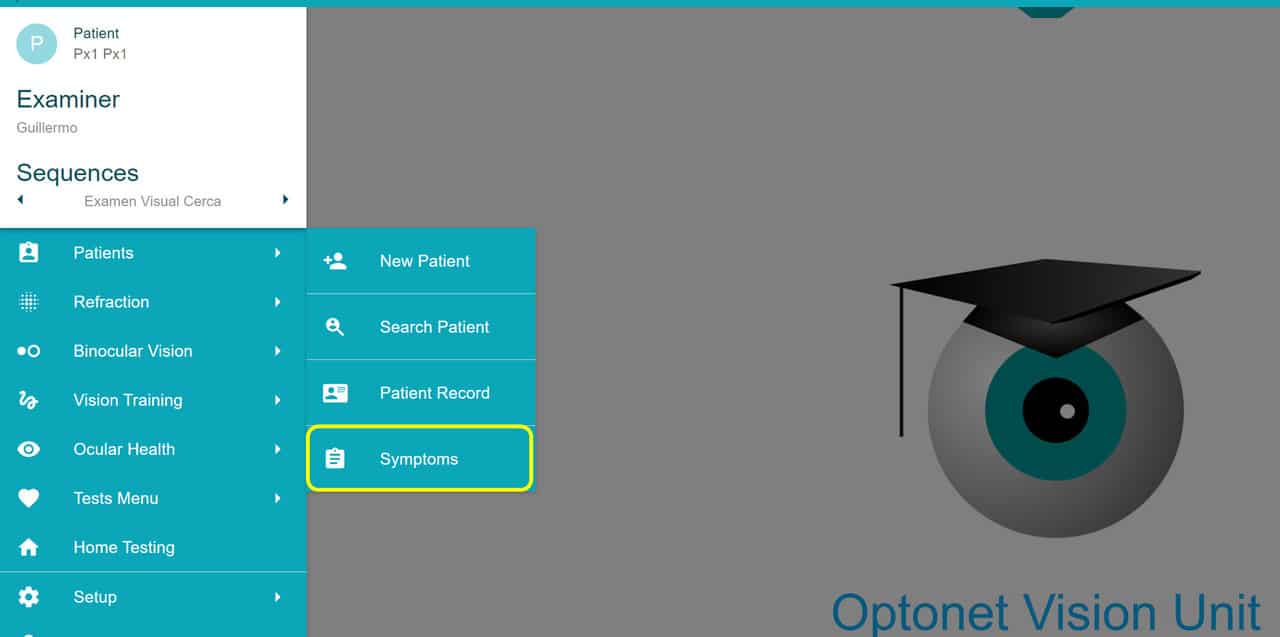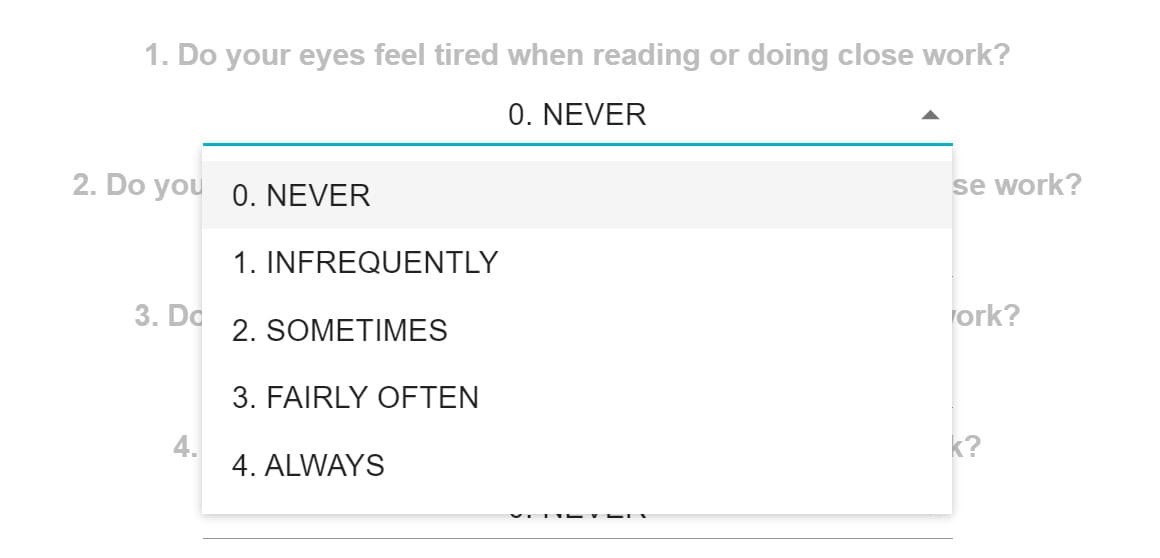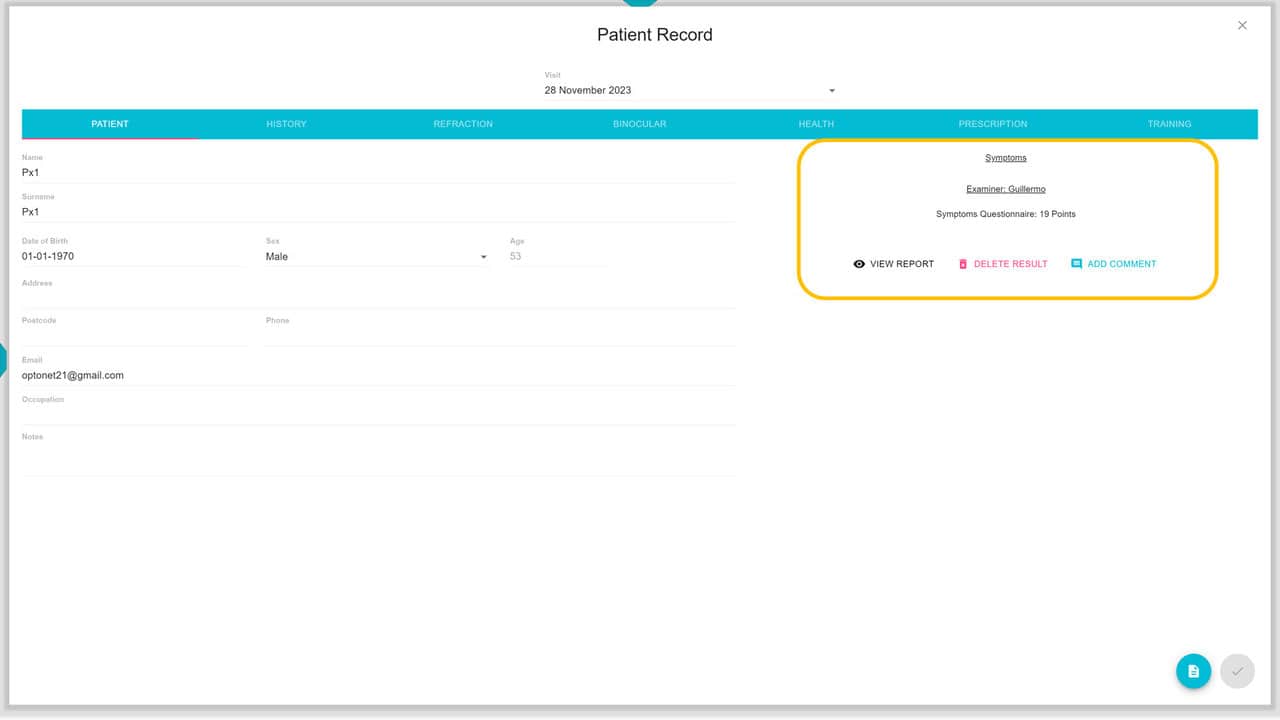In the Patients section, the last link leads to the Symptom Questionnaire for Convergence Insufficiency (CI), known as the Convergence Insufficiency Symptom Survey (CISS).

CISS Questionnaire #
This questionnaire was developed by the CITT research group prior to conducting clinical trials for the treatment of CI.
The CISS survey plays an important role in the diagnosis of CI and is also used to evaluate the effectiveness of the treatment. This is achieved by comparing each patient’s responses before, during, and after Orthoptic Training.
The CISS questionnaire includes 15 questions that inquire about the frequency at which the person experiences each listed symptom. The responses are quantified on a scale from 0 to 4, with the following values: never (0), infrequently (1), sometimes (2), fairly often (3), or always (4).

Results #
By summing the values of the 15 responses, a total score is obtained, ranging from 0 (indicating no symptoms) to a maximum of 60 points (representing the constant presence of all symptoms). (Note: To access all 15 questions, it is necessary to use the right-hand scrollbar).
This scoring method ensures that a patient experiencing more frequent and severe symptoms will receive a higher score, effectively summarizing the degree of their symptomatology in a single numerical value.
Once all responses are completed, the green icon must be clicked for the program to automatically calculate the result and save it in the patient’s record.
The results are displayed within the Patient Record, in the section to the right of Personal Data. This includes the Total Score, along with three links: ‘View Report’, ‘Delete Result’, and ‘Add Comment’, as illustrated in this example:

Symptom Report #
The ‘View Report’ button enables a detailed review of each response provided by the patient to the questionnaire. This feature is particularly useful for future assessments, as repeating the questionnaire for the same patient allows for a comparison of responses over time. This comparison helps in determining which symptoms have shown improvement through Orthoptic Training.

Cut-off values #
The CITT research group determined that the optimal cut-off value for differentiating between patients with Convergence Insufficiency (CI) and those without binocular alterations is 16 points for children (under the age of 21) and 21 points for adults. A score equal to or greater than these respective values on the CISS questionnaire is considered more effective in identifying patients with a significant binocular disorder.
References
2. Validity and reliability of the revised convergence insufficiency symptom survey in adults
